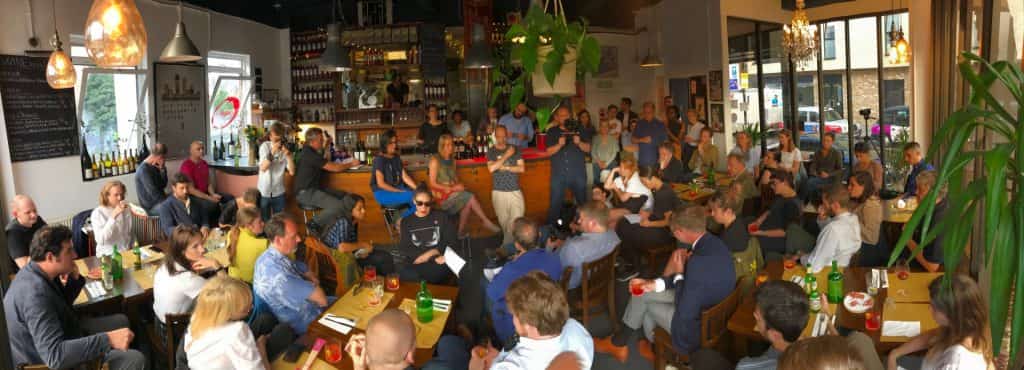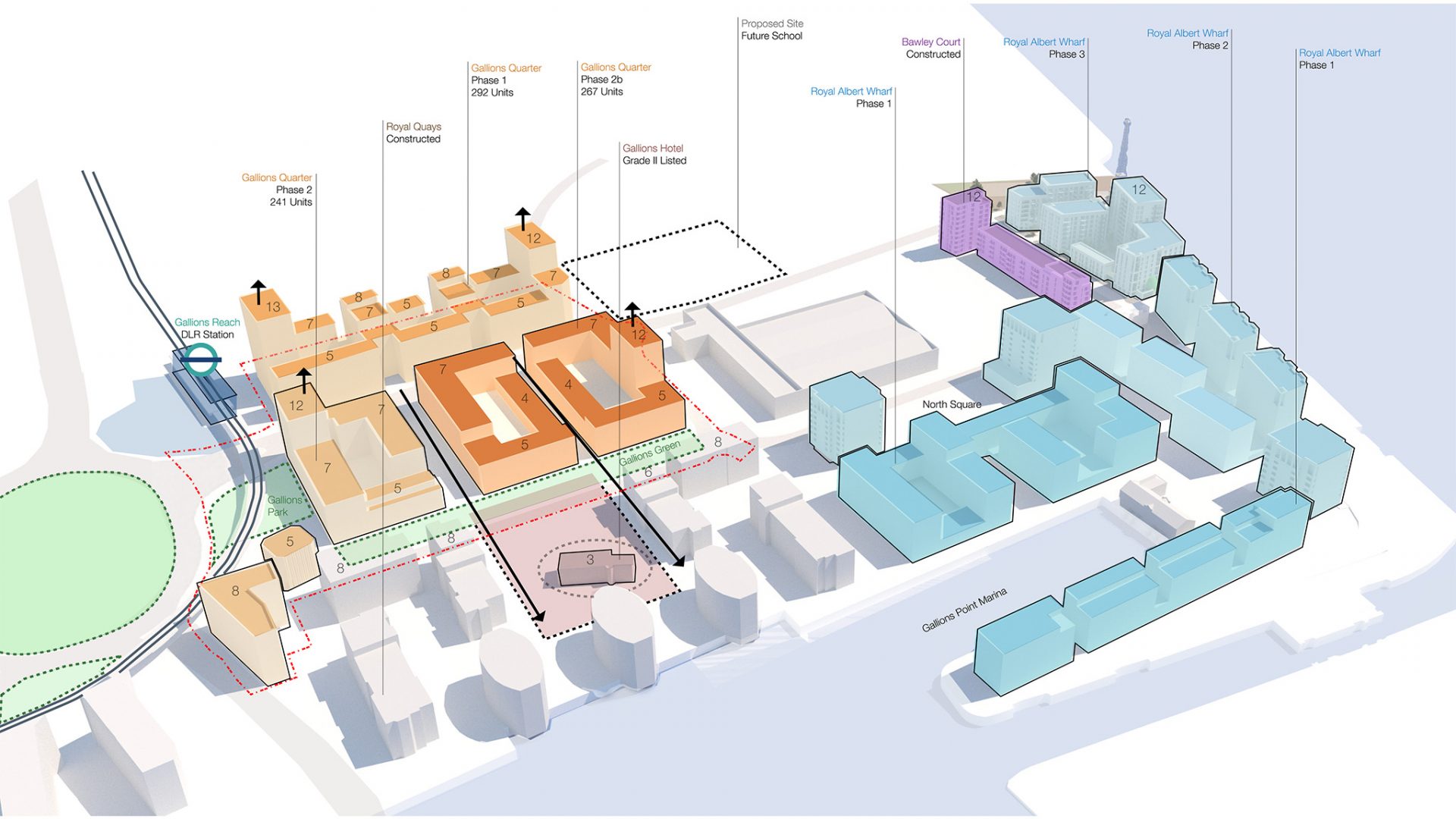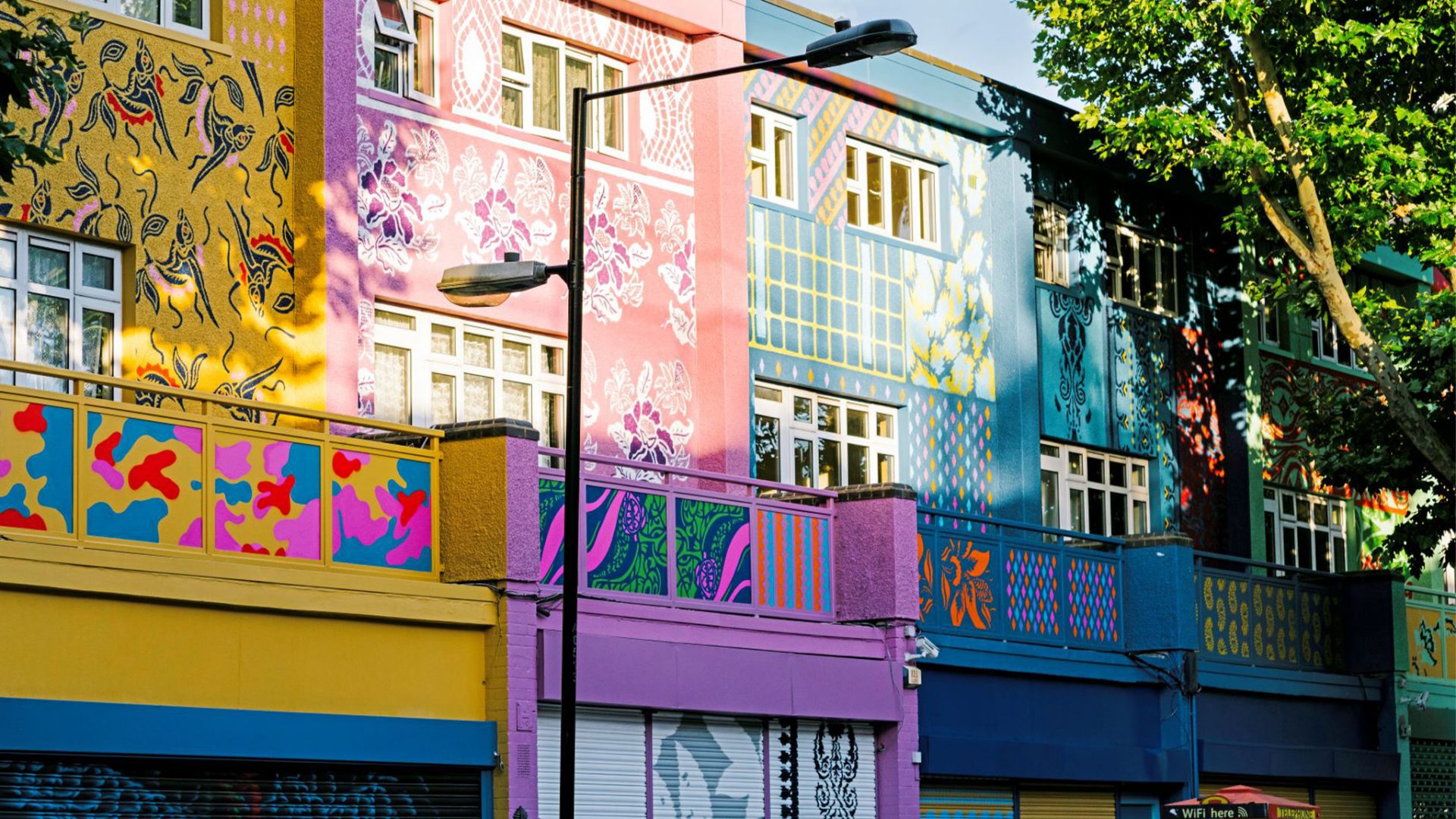
As the day finally started to cool down, a small group gathered on a Venetian-inspired Altana and looked out over the Regents Canal and the buses sliding past along Mare Street. We were reflecting on an evening of heated debate about architecture’s connection to the punk movement of the 70s and 80s, or lack thereof.
The Negroni Talks series was set up by Fourthspace to create an informal backdrop to discuss issues affecting the profession as part of the London Festival of Architecture. Inspired by the café culture of the late 19thcentury, the aim was to get speakers and audience alike to feel comfortable to properly engage with one another in a fiery debate, and this was the first talk that really tapped in to some rebellious spirit.
Led by chief agent provocateur Tim Abrahams, the heady atmosphere of Campari and summer sun soon led to some strong opinions. Charles Holland saw the true feistiness of architecture in the opportunities brought about by the post-punk era, while Piers Taylor drew on the illicit elements of self-build (derided as more hippy thank punk by some in Ombra). Caz Facey announced that punk was inherently amateurish and so architecture would always be out of reach, and Shumi Bose was more interested in the DIY projects she saw in Calcutta that could be a fusion of the two. The audience had their own opinions, with Sean Griffiths making the important point that punk was a working-class movement while architecture remains the arena of the privileged few.
There’s still a lot of doubt if buildings can allow for unbridled rebellion of the status quo but for a brief moment on a Monday night there was a little anarchy in the UK.






